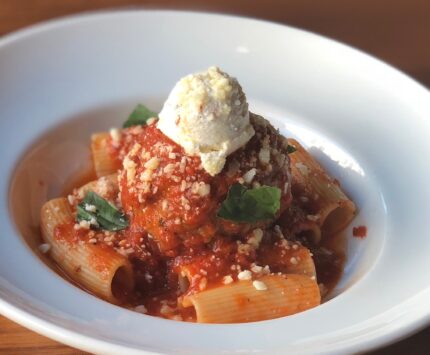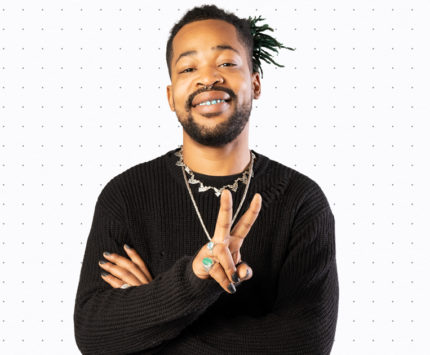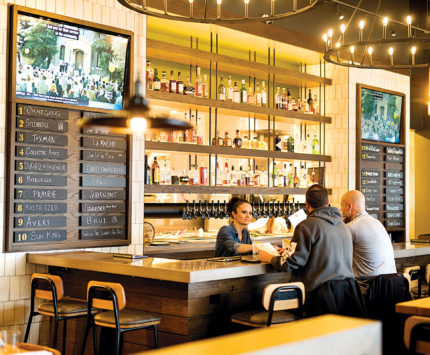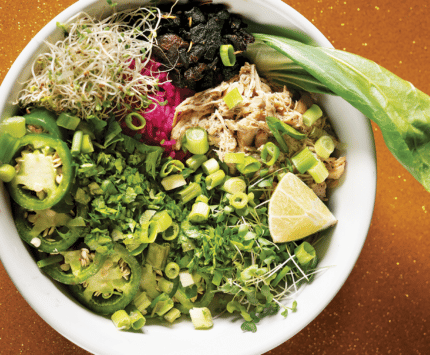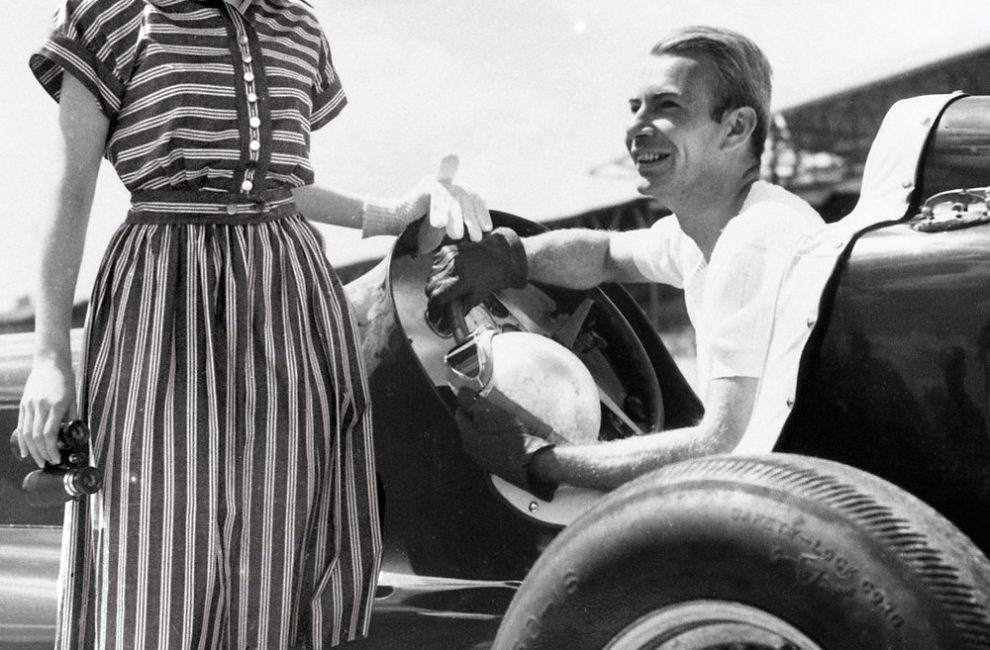
Checkered Past: Indy 500 Fashion
On Sunday morning, May 29, 2005, while holding my first Indianapolis 500 press pass, I grappled with a number of important questions: How early should I leave to beat traffic? Where should I park? Could I subsist merely on the six cans of Tecate that fit in my insulated shoulder tote, or should I dump the whole 12-pack into my bulky, wheel-less cooler? And, finally—what should I wear?
I was a new journalist in the Circle City, dispatched to the Indianapolis Motor Speedway to immerse myself in Indy’s signature event, so I knew I had to look somewhat professional. But I didn’t want to stick out. A couple of weeks earlier, I had watched scenes from another May race, two hours south in Louisville, where the men in the stands wore resplendent linen suits and the women swanned around in strapless sundresses. Even in that whiskey-soaked infield, which sees its share of mud-wrestling and breast-baring, people wore the garish, broad-brimmed Kentucky Derby hats that have been the signature look at Churchill Downs for longer than a century. But with Memorial Day still a day away, my seersucker suit—if I had one—would have been properly in mothballs (I am not a hobo), and I’ve never quite mastered the bowtie. Besides, this is Indiana, and north of the Ohio River, we Midwesterners are a bit more pragmatic. The forecast was for sunshine, high in the mid-70s. I laid out my estimation of racing-business-casual: blue jeans, tennis shoes, and a polo shirt, tucked in. After all, it was Sunday.
But when I arrived at the track, I immediately realized I was overdressed. Maybe a few of the fans seated in the shaded bleachers wore pant legs, but the vast majority were in shorts. The only hats were ball caps or visors. Even the celebrities who walked the red carpet en route to their climate-controlled Pagoda suites were dressed down. Linkin Park’s lead singer wore a white ribbed undershirt. Russell Crowe arrived in a black vintage racing tee. Miss freaking America had on black jeans with a leopard-print halter top (for the record, she was Miss Alabama). Then there was the infield, a carnival of bikini tops and cutoffs—unless you ventured into the turns,where clothing was altogether optional.
The track didn’t always look like a Lynyrd Skynyrd concert. In the sepia-toned photos of the early Spectacles, you’ll find scads of race fans from the 1920s and 1930s snappily clad in three-piece suits, straw hats and fedoras, long dresses and flapper caps. It was as if they were on a Sunday jaunt in the country—and in a sense, they were, Speedway being a small rural outlet miles beyond the city limits at the time. But when the track reopened for racing after serving as a World War II airfield, the facilities tumbledown and overgrown with weeds, it seems that spectators were less concerned with ostentation. By the time the hippies of the 1960s gave way to Snake Pit savages in the 1970s, the idea of wearing anything you couldn’t rip off and leave in the mud was a concept as outdated as the ride-along mechanic.
Then came 2009, the Speedway’s 100th anniversary. When people actually started digging into those archival images, a few Naptowners became nostalgic for the dandies in the grandstands. The Indianapolis Star’s social columnist at the time, Cathy Kightlinger (who now works for IndyCar), wrote, “Dress up for the Indy 500 and leave the ‘dirtball chic’ look at home” and railed against “the underwear-for-outer-wear, roll-your-smokes-up-in-your-sleeve looks I abhor seeing at Indianapolis’ proudest event.” Through Facebook, she implored fans to “find our own style—the looks of the fastest oval race in the world.”
In recent years, possibly due to the influx of foreign drivers and the addition of a European-style road race (the Grand Prix of Indianapolis, in early May), the track’s style quotient has shot up noticeably: more dresses and sunhats, some button-down shirts on men. That got me thinking: What is 500 style? Or, at least, what could it be? As Kightlinger pointed out, it mustn’t directly knock off the Kentucky Derby, nor should it. The Derby is blue-blood, the 500 blue-collar. But might we follow Louisville’s lead and go retro, to the fashions of our event’s origins?
SoBro design guru and vintage-motorcycle dealer Matty Bennett would love nothing more. He’d be all about parasol-shaded women and the newsboy caps and turn-of-the-20th-century tweeds on men, but that’s impractical. That’s not Indy. Especially in the heat of late May in the Midwest, in the vast and uneven infield. “The first couple times at the race, my wife wore fancier shoes to the infield,” he says. “Afterward, she said she’d never do that again.” Besides, auto racing is about innovation, perpetual re-invention; the Brickyard was built as a testing ground for new technology. Meanwhile, horse racing doesn’t look much different than it did in 1875. And let’s face it—these days, the whole big hat/seersucker shtick can come off as a bit clownish.
“There really is a sense of two very different experiences happening in the same place,” Pattern Magazine editor Polina Osherov, on Indy 500 Fashion.
Local fashion maven and Pattern magazine editor Polina Osherov also points out that the 500 is unique in its diversity. With drivers from across Europe and South America, IndyCar attracts fans from a spice rack of cultures who mix with the locals in the track’s giant bowl. And the size of that bowl is also key—560 acres across which spectators are dressing for vastly different race-day agendas. “There really is a sense of two very different experiences happening in the same place,” says Osherov. “Those who come to party want to be comfortable and wear clothing that will survive a day of drinking, sweating, and dancing. Then there are the celebrities who attend, along with other VIPs, usually treated to air-conditioned comfort. You’re going to pay a little bit more attention to what you’re wearing and probably show less skin.”
Perhaps we should take our cues from the traditional keepers of racetrack couture: the drivers’ spouses. With the traditional Month of May events, along with recent additions like the Grand Prix and the Rev cocktail party, the families behind the people behind the wheel are as visible as ever. “For drivers and their families, there is no other event quite like the Indy 500, so it’s an event worth dressing up for,” says Bronte Tagliani, fashion blogger and wife of driver Alex Tagliani, who finished 13th last year. “It’s not just any race; it has something so special about it. With Rev and the 500 Festival Parade, we all have reason to dress up a little more these days.” Fourth-year driver James Hinchcliffe adds that on race day, the spouses have ulterior motives for spiffing it up: “If their man is running up front, they know the cameras will be on them.”
But for the rest of us, who have to worry only about photo-bombing someone—or, worst case, a post-race mug shot—is there an article of clothing or certain material, utilitarian and distinctively Indy, that could give the 500 the signature fashion statement it’s missing? Kightlinger lobbied for gussied-up flip-flops a couple years ago. Black-and-white outfits inspired by the iconic checkered flag could be reinterpreted as gingham. Bennett suggests some sort of hat, a newsboy or even a Panama for the guys, that could go with a nice pair of shorts and a button-down shirt; a parasol or sunhat for the women. Bronte Tagliani envisions a common element, like denim, that could be dressed up and down and transcend the crowds, from the Pagoda to the Snake Pit.
Personally, after sweating through my jeans, I am done with denim, at least until cut-offs for men make an unironic comeback and I have a chance to tone and tan my thighs. And the Panama hat will have to wait until I find a Hawaiian shirt that doesn’t make me feel like Pavarotti. But I did take away an invaluable fashion lesson at my first 500: It’s all about accessories. I immediately went out and bought a larger cooler with wheels.
Shifting Styles
Through the decades, 500 fashion has loosened up but lost some character.


